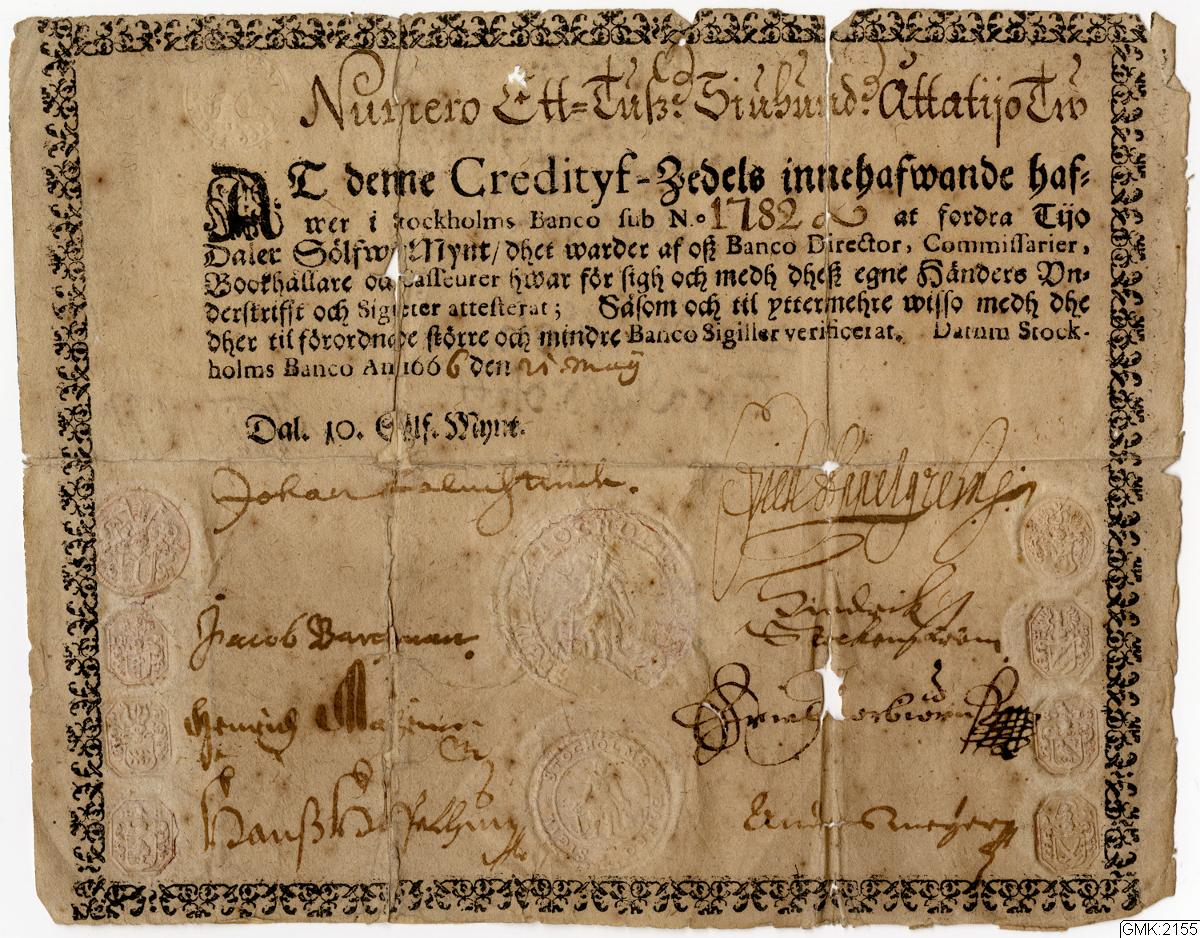Europe’s

GM:2155
Before there were banks, paper money differed from a coin made of gold or silver because the material itself, the paper, had no value at all. Instead, the paper notes were promises that there was money somewhere else – coins that the paper note’s owner could collect with the aid of the note. This was an innovation that required a lot of trust between the people involved.
China was the first country to have paper currency but Sweden was the first one in Europe. Johan Palmstruch in Stockholm opened a bank that bought and sold bills of exchange. In 1661 he issued kreditivsedlar (credit notes), which were interest-free IOU (I owe you) notes. These IOUs were for a specific amount and supposedly represented money deposited in the bank. Each note was signed by the people involved.Because there were not restricting regulations, the Palmstruch bank could print as many notes as it wanted.
When too many people wanted to take out their money at the same time, the bank was forced into bankruptcy in 1668. Palmstruch was sentenced to exile and to pay damages.In order not to risk a repeat of this event, the Swedish Parliament (the Riksdag) decided to ban paper notes completely. It was a long time until they were permitted in Sweden again.